| “Forever Orange” has become a fervent invocation for support of Syracuse University that spans the generations, from incoming freshman to elders who’ve each experienced a personal affinity for Syracuse University for decades. While young, new students living together in dorms and assorted housing complexes are making their own memories, a community for the older crowd is catering to forever feelings about the University just a few miles off campus. The partnership between the College of Professional Studies and The Nottingham, a part of the Loretto Health System, began in 2022 with an idea that Jeffry Comanici ’88 G ’23 helped turn into a reality. “My parents, who were residents of the Nottingham, really enjoyed the camaraderie they found there,” Jeff recalls. As he got to know the community’s professional leadership, he uncovered a strong connection between the University and the residents of The Nottingham, located just four miles from University Place. “We conducted an informal survey during 2020, followed by a focus group in 2021, and found that 30 percent of our residents had a strong connection to SU,” says Jennifer Ingerson, Loretto’s Vice President of Housing. Residents were graduates, faculty, staff or had a child or grandchild who attended the University. Orange Academy on Location, as it’s called, began at The Nottingham with a well-attended tailgate party there last October before a Syracuse football game. In addition to a performance by the Otto Tunes, several lectures rounded out the inaugural 2022-23 programming, including by Brian Taylor, professor and director of the Moynihan Institute of Global Affairs at the Maxwell School of Citizenship and Public Affairs; Mary Grace A. Almandrez, the University’s vice president for diversity and inclusion; and Derek Brainard, an instructor in the bachelor of professional studies program. Professor Emeritus of Biology Richard Levy resides at The Nottingham and appreciates the partnership between his new home and the University he served for 36 years. He says the tailgate event was a great display of Orange spirit, but he most appreciated the lectures presented. Dean Michael Frasciello sees social events like the tailgate party and intellectual offerings such as those by Taylor and Almandrez as integral elements of the mission of the College of Professional Studies to engender life-long learning. “Life is to be enjoyed and embraced, no matter what one’s age. Cultivating the thirst for knowledge and for human interaction is tantamount to what we do as a College and as a University,” he says. Loretto’s philosophy and approach to living echoes this sentiment. “We strive to provide an environment of purposeful and engaged aging,” says Kara Gemmell, director of independent living at The Nottingham. The new partnership is proof that “Forever Orange” is truly ageless. The 2023-2024 season of Orange Academy on Location at Loretto begins next month with a tailgating event prior to the Syracuse vs. Florida State game on Oct. 14. Are you interested in helping to nurture meaningful Orange Academy enrichment residents of The Nottingham? Learn more by contacting Executive Director, College of Professional Studies Post Traditional Advancement, Jeffry Comanici, ’88, G ’23, at 315.443.1409 or jjcomani@syr.edu. By Cheryl Abrams |
News
Staff Spotlight: Christine Brown, Center for Online and Digital Learning
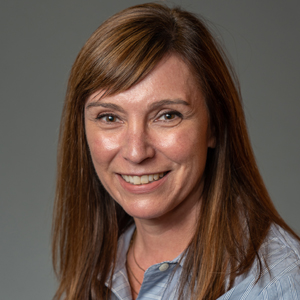 The College of Professional Studies’ mission is to deliver exceptional support and services to a diverse part-time student population seeking a Syracuse University education. The Center for Online and Digital Learning stays true to this mission by providing evaluation, development, and delivery of world-class online programs at Syracuse University.
The College of Professional Studies’ mission is to deliver exceptional support and services to a diverse part-time student population seeking a Syracuse University education. The Center for Online and Digital Learning stays true to this mission by providing evaluation, development, and delivery of world-class online programs at Syracuse University.
In this Q & A, get to know Christine Brown and her role at the Center for Online and Digital Learning.
- What is your position at the College of Professional Studies?
I’m the instructional design manager for the Center for Online and Digital Learning (CODL).
- How long have you worked at the College of Professional Studies?
Five years!
- In one sentence, how would you describe your role and/or department?
I work together with the instructional design team and faculty developers to design and build engaging online courses and instructional assessments and activities.

- What aspects of your profession bring you joy?
Growing up in a small, remote town gave me a deep curiosity about expanding my understanding of the world and the people in that world. I believe it ignited my interest in developing learning opportunities for people regardless of where they live. And I believe that is why I’m so passionate about the work that I’ve chosen to do. I have been an online instructional designer for my entire career. I love designing online learning programs. I find it incredibly rewarding to meet the learner where they are to give them the educational experience they need to achieve their professional and personal goals. And, I get incredible satisfaction from working with thoughtful, curious, and engaging minds. The faculty, my colleagues, and the students—each of them enriches everything I do and gives me incredible joy.
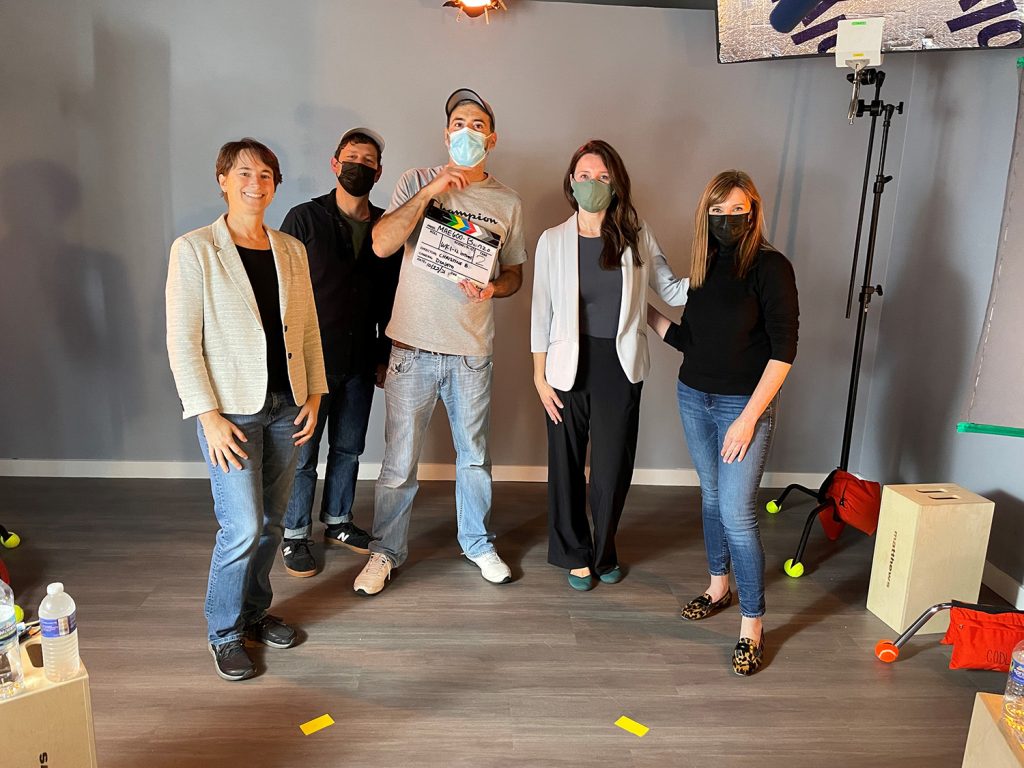
- What is your proudest moment at the College of Professional Studies?
U.S. News & World Report released its 2023 rankings and Syracuse University has been ranked:
- #21 (#5 private) for Best Online Bachelor’s Programs (up from #56 last year)
- #13 (#3 private) for Best for Veterans for Online Bachelor’s Programs (up from #40 last year)
- #8 (#5 private) for Best Online Bachelor’s in Business (retained #8 rank from last year)
This speaks directly to the work we do and the people to whom we provide educational opportunities. I couldn’t be more humbled and honored by this distinction. Our leader, Michael Frasciello, dean of the College of Professional Studies, had this to say:
“To understand the significance of these rankings, we were #122 in 2020 – our first year of submitting data for online undergraduate programs. By our estimate, no school has moved up that many positions so quickly in the history of the U.S. News & World Report online rankings (101 positions in 3 years). This extraordinary movement and recognition is a testament to so many things we have done and continue to do exceptionally well, but at the core of this recognition is our people. Our people – each of you – have made an unwavering commitment to exceedingly high quality course designs, rigorous curricula, engaging instruction, and a differentiated model of student support.”
This is a wonderful statement on the value of the work we do, and my team and I are honored to have contributed to this achievement.
- How does your department support students during their time here?
At the end of the day we want students to walk away with the knowledge, skills, and abilities they need to achieve success. We work very hard to ensure that the online learning we develop uses sound instructional strategies, engaging assignments and interactions, and uses universal design principles so that it is accessible to all learners. Our goal is to ensure a high level of teaching and learning so learners are engaged and successful.
- How does CODL encourage an adaptive online learning space to meet the needs of different online learning strategies?
It’s important to build learning experiences that are right for the program goals. We don’t have a ‘one size fits all’ approach to designing instruction. We work with each faculty developer to ensure the instructional strategies and activities are effective for the content of the course by using several learning frameworks to inform course development.
We also pay attention to the social aspect of learning. In an online space, I think that’s something that can easily get overlooked. People learn behavior from their environment through observation, imitation, and modeling. Some believe that putting their course materials online is enough to teach a course. We support the notion that paying attention to the social aspect of learning in an online environment is critical and we work hard to make sure that it is a part of the courses we design.
- Our goal as a college is to provide high-quality service to our students. How does your department go above and beyond to support Syracuse University students?
Our mission is to promote the success of learners by expanding access to Syracuse University’s educational opportunities. We partner with content experts to develop engaging, rigorous, and inclusive experiences for a diverse and global community of learners. We execute this mission by re-imagining how online education is designed and experienced. We have a professional staff of instructional designers, video production specialists, multimedia design professionals and quality assurance professionals all focused on the learner and their excellent learning experience in an online environment.
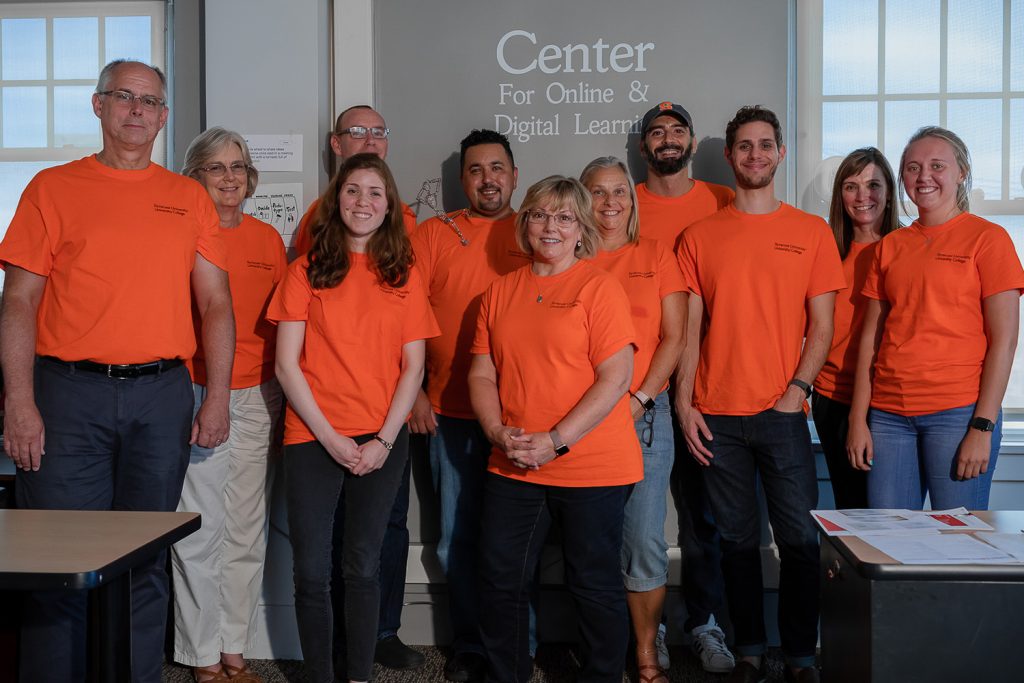
- How does CODL implement diversity, equity, inclusion, and accessibility initiatives into the course design?
Our goal is to be respectful and inclusive in the instructional content of each course. We work very hard to ensure that all our materials are accessible to all learners so that all learners can see, hear, and understand our course materials. One of the models we embrace is Universal Design for Learning. This model provides a framework to optimize teaching and learning for all people based on how humans learn. It addresses the many ways our brains process information when learning. In our design, we pay attention to the way people learn and apply it to the online environment. Some examples of this include the following:
- Our videos are used to present information in a visual way, but they’re also captioned to be sure that learners who benefit from seeing text are accommodated. Not only does it help the non-visual learner, but the learner who might not have English as their first language.
- Asynchronous lecture materials can be offered with a combination of text, graphics, and video to support different learning preferences.
- We offer options for student assignment submissions. For example, a student may have the option to submit a discussion board post as a written response or a visual response (such as a graphic or a video).
- All visuals are designed with color schemes that meet accessibility guidelines for color contrast and visibility. In addition, all visuals have alternative text descriptions. We also ensure that we use images that reflect the diversity of the students we serve.
- We ensure our materials are accessible to all learners. All documents, PDFs, and PowerPoints, are made accessible so that assistive technologies can be used.
- If students would like to get connected with your department, how can they do so?
They can contact us at codl@syr.edu.
College of Professional Studies Announces Program Director for Bachelor of Professional Studies in Creative Leadership
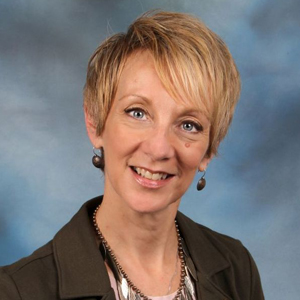
Susan Conklin joins the College of Professional Studies in Fall 2023 as a professor of practice and program director for the Bachelor of Professional Studies (BPS) in Creative Leadership. She will teach and develop online courses in leadership and management, while serving as the undergraduate director for the Creative Leadership major. She will also create and facilitate non-credit programs in leadership development for our Office of Professional Acceleration and Microcredentials.
Conklin is the managing director at the Institute for Applied Development, a full-service consulting, education, and training organization. She also designs assessments and facilitates online and hybrid courses and certification programs. Additionally, she is a principal/consultant with Concentric Personal & Professional Growth in Syracuse, where she provides consultation, workforce training, and organization development for corporate, non-profit, government, and educational clients. Conklin comes to the College of Professional Studies with a wealth of experience and knowledge from the private sector and from being a practitioner-scholar of leadership over the course of her unique career.
She has served as a part-time instructor at the College of Professional Studies’ Bachelor of Professional Studies program since 2015 and has been vital in the creation of the Creative Leadership Program. She teaches organizational leadership, strategic leadership, leadership application and behaviors, and customer relations leadership. In addition, she provides professional development and executive coaching and training through the Office of Professional Acceleration and Microcredentials.
Conklin is a member of the American Society for Training and Development. She is also the co-chair for the State University of New York Leadership Institute’s “Leadership Tools for Women” Program.
Conklin earned a Master of Business Administration from Syracuse University, with a concentration in marketing management, organizational change and development, and she earned a Bachelor of Science in Business Administration with a concentration in Marketing from Le Moyne College.
About the College of Professional Studies
The College of Professional Studies is a global, inclusive and future-facing college, providing access to diverse students and learners seeking a Syracuse University degree, credential, certificate or education experience.
Foundations of Entrepreneurship for People with Disabilities Announced at Syracuse University
Explore How to Launch a New Business | Test Your Ideas | Get Feedback from Experts | Connect with Start-up Networks
Are you interested in learning about entrepreneurship from a disability perspective? If so, the College of Professional Studies invites you to join Syracuse University’s free online program starting September 5, 2023. This 12-week course is designed specifically for people with disabilities who want to learn how to start a business.
Hosted by two disabled activists, John Robinson, CEO of “Our Ability” a cutting-edge non-profit that links disabled applicants with the employment sector, and Professor Stephen Kuusisto of the Burton Blatt Institute (BBI) on Disability at Syracuse University, this groundbreaking virtual program will introduce participants to the principles of entrepreneurship through online-only instruction that will be free of charge. The course is instructed by John Liddy, an experienced entrepreneurship workshop leader.
Thanks to a New York Empire State Development grant through the Burton Blatt Institute (BBI), Syracuse University can offer the free program “Foundations of Entrepreneurship for People with Disabilities.” The program will consist of weekly online materials, readings, and assignments that participants can do at their own pace to work through their ideas, step by step. At specified intervals, participants will complete an evaluated assessment of their readiness for entrepreneurship to:
• Determine readiness for the process of venture development
• Determine suitability of the key idea for implementation as a business venture
During each of these assessments, a given participant may agree with the instructor to not move further to become an entrepreneur. That decision automatically gives the participant the opportunity to begin a different free, online-only course entitled, “Foundations for Employment for People with Disabilities” to help them be more competitive in the job market instead of developing their own business.
Weekly live online group sessions will be an opportunity for the instructor, guest speakers and participants to engage in discussions on the topics of entrepreneurship, specifically tuned to people with disabilities. At the completion of the course, participants will be introduced to a variety of options, such as the pursuit of funding as well as a mentor network to assist them in the development of their ideas into a sustainable business venture.
About the Instructor
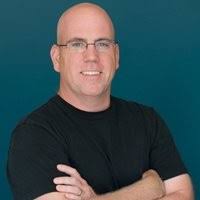 John Liddy is the interim Vice President for Innovation and Entrepreneurship of CenterState CEO in Syracuse, New York. He is also an Entrepreneur in Residence for the Syracuse Technology Garden, and the Director of the Griffiss Institute Business Incubator. John works directly with companies (new ventures and established firms) as well as consults with organizations (colleges, economic development, and government) seeking to assist these populations. He has participated in multiple startups as well as holding corporate executive positions. John has led numerous workshops for entrepreneurs, including several for veterans with disabilities through the Institute for Veterans and Military Families (IVMF) at Syracuse University.
John Liddy is the interim Vice President for Innovation and Entrepreneurship of CenterState CEO in Syracuse, New York. He is also an Entrepreneur in Residence for the Syracuse Technology Garden, and the Director of the Griffiss Institute Business Incubator. John works directly with companies (new ventures and established firms) as well as consults with organizations (colleges, economic development, and government) seeking to assist these populations. He has participated in multiple startups as well as holding corporate executive positions. John has led numerous workshops for entrepreneurs, including several for veterans with disabilities through the Institute for Veterans and Military Families (IVMF) at Syracuse University.
Fulbright Pre-Academic Program Sparks New Ideas with Open Access Research
Fulbright graduate students flexed their storytelling abilities Friday, Aug. 11 at the Fulbright Poster Session, an annual event that allows the international students the opportunity to present scholarly research topics to the public.
This year, 37 masters and Ph.D. students from 23 countries attended a pre-academic program at Syracuse University’s English Language Institute before matriculating into their degree programs at institutions across the United States. Sponsored by the U.S. Department of State’s Bureau of Educational and Cultural Affairs as part of its Fulbright Program and administered by the Institute of International Education, the scholars spent this time participating in a variety of workshops, field trips, and textual and oral communication courses. The students incorporated the resources and skills they acquired during their time at Syracuse into their poster presentations, allowing them to practice their presentation skills through repetition as attendees walk by.
“The event marks the culmination of a program that provides them with the confidence they need to embark on the next leg of their academic journey at different host institutions across the country,” says David Lind, director of International Programs. “International graduate students must master academic English and also learn to present their research in a manner that’s understandable to those not specialized in their domain.”
